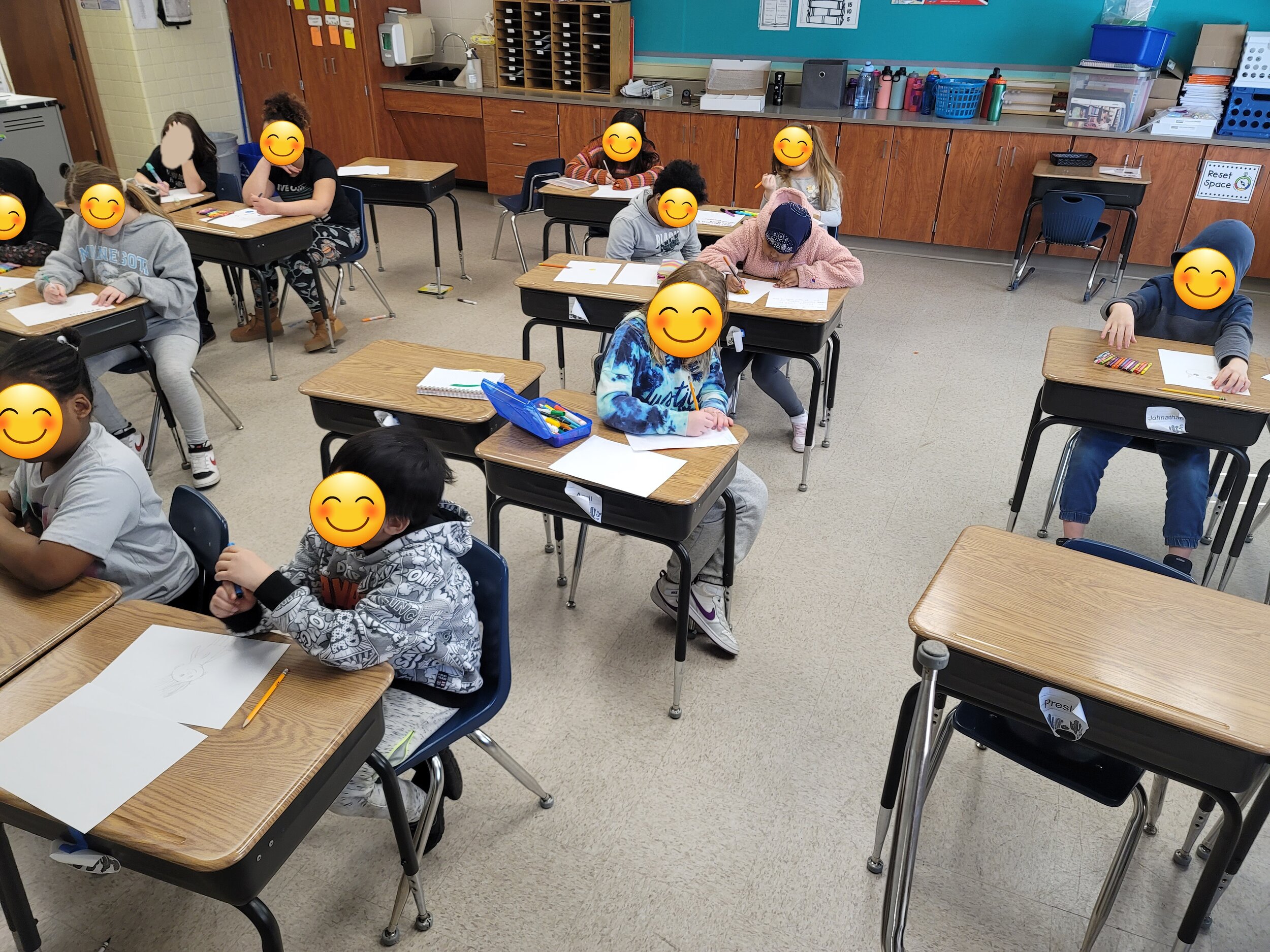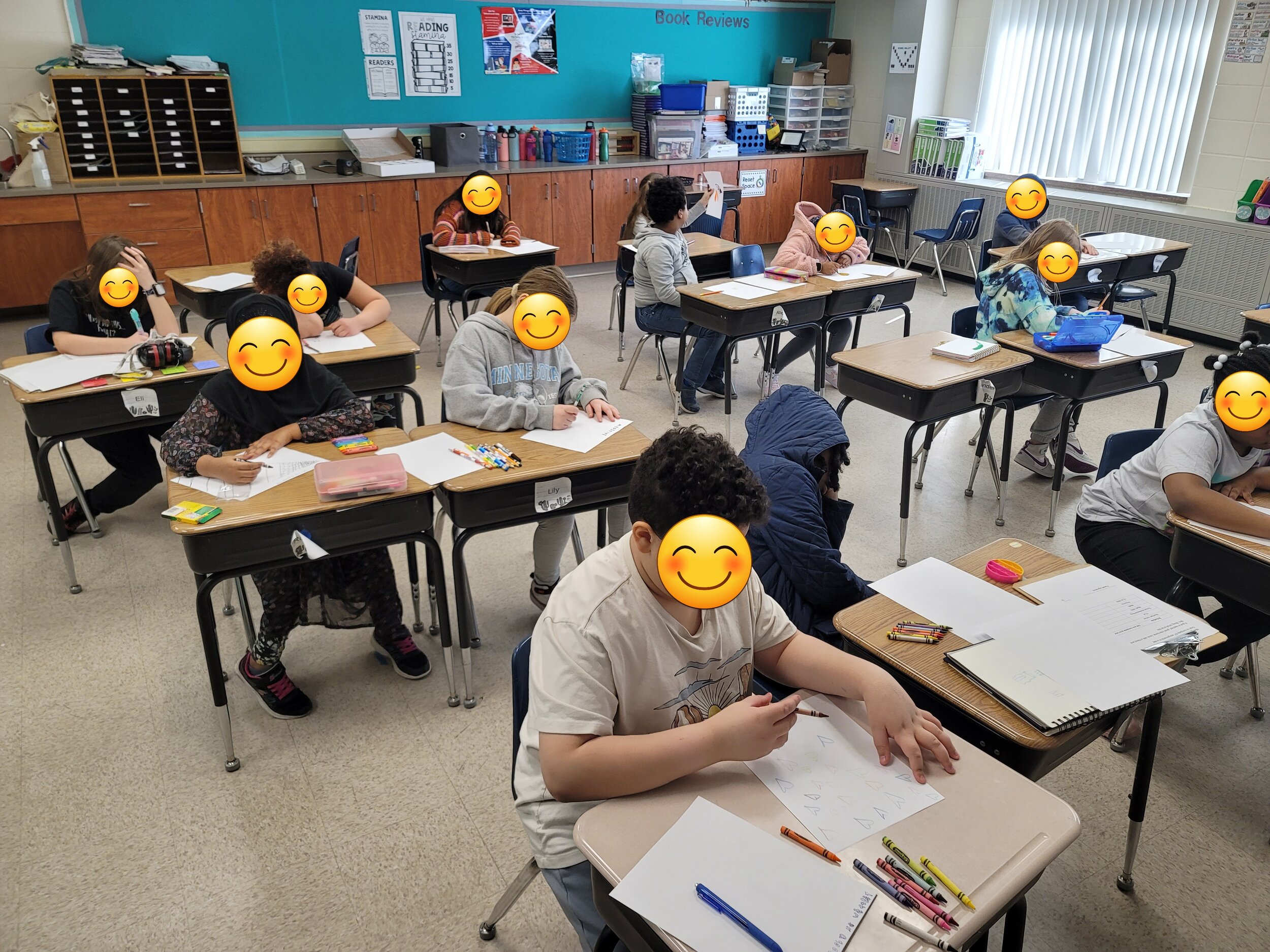Using Color Mending to help students process emotions
Teacher: Ms. Moog | Location: Twin Cities, MN | Grade Level: 3rd
Ms. Moog found Color Mending through TikTok and contacted Chelsea about using it with her students.
“My students are going through a lot. Developmentally they’re experiencing big emotions, they’re still feeling the effects of the lockdown during the pandemic, and most of them live in low socioeconomic environments. I’ve noticed the majority of my students can’t label their feelings which leads to them not feeling comfortable talking about emotions.”
When Ms. Moog found Color Mending she saw it as an engaging way to enhance the SEL work she was already doing with her students. She uses The Zones of Regulation and set up a Regulation Station for students to use as needed.
For using Color Mending with her students she decided to set aside 20 minutes each Friday to color as a whole group.
“Initially I was nervous about introducing this to my students. I wasn’t sure how they would respond, especially because it’s different than the other SEL strategies I use with them. I was surprised that I haven’t experienced a lot of resistance to it.”
After helping her students understand they could color anything they wanted like squares or swirls, and they didn’t need to color a picture, she noticed her students becoming more open to the practice.
“Some students are really into it, and others aren’t. We typically start with a breathing exercise, I have them write at the top of the paper if they want to color heavy or light emotions, and then they color. When we have time, I work 1:1 with students who want to interpret their colorings with the Color and Common Shapes Charts.”
The more the students colored, and the more they processed and compared how accurate the interpretations of their coloring were, the more excited they became about this classroom practice. Ms. Moog also observed how students who were feeling big emotions on their coloring day used the practice to work through emotions - from coloring intensely to ripping up the paper at the end of the coloring session.
Over the course of the 3 months, Ms. Moog started noticing shifts in some of her students.
“For my students who actively participate in Color Mending, they are able to process emotions better and have become better advocates for themselves. They now have the awareness of when they need to take a break and destress, which typically means taking 5 minutes to ‘color it out.’”
Using Color Mending with her students in the future, Ms. Moog has found ways to integrate it more into her classroom. She’s seen how taking 5 minutes to “color it out” or using it to help with mediation between students are effective classroom management strategies.


